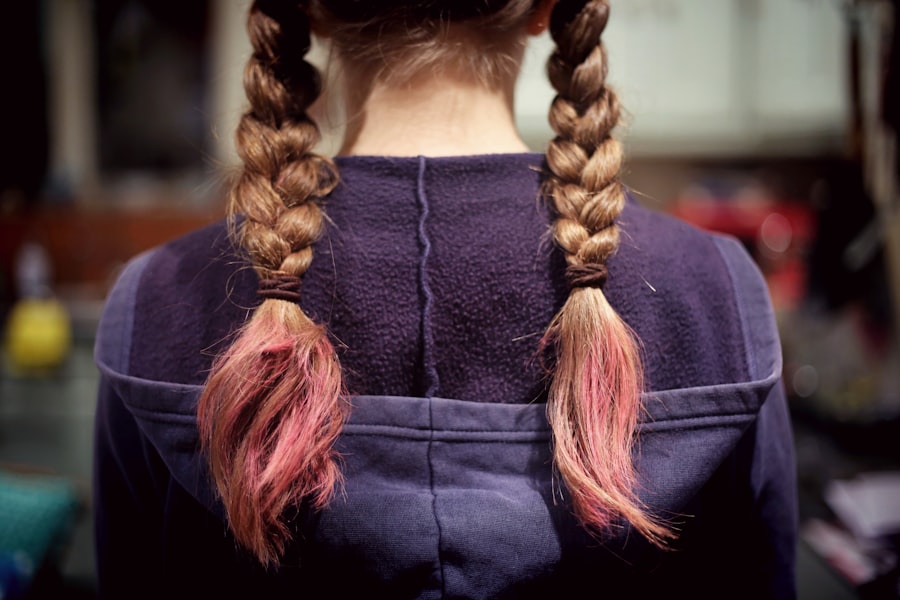When you decide to undergo laser hair removal, it’s essential to grasp the intricacies of the process. At its core, laser hair removal utilizes concentrated beams of light to target and destroy hair follicles. The procedure begins with a consultation where a trained professional assesses your skin type, hair color, and overall suitability for the treatment.
This initial step is crucial as it helps tailor the experience to your specific needs, ensuring optimal results. You may find that the technician explains how the laser emits energy that is absorbed by the pigment in your hair, leading to its destruction while sparing the surrounding skin. As you prepare for your session, you might be advised to avoid sun exposure and certain medications that could increase sensitivity.
During the treatment, you will wear protective eyewear to shield your eyes from the laser light. The sensation can vary from person to person; some describe it as a mild snapping feeling, while others may experience slight discomfort. The duration of each session depends on the area being treated, but many find that it is relatively quick, allowing you to return to your daily activities shortly after.
Understanding this process can help alleviate any anxiety you may have and set realistic expectations for your results.
Key Takeaways
- Laser hair removal targets hair follicles with concentrated light energy to inhibit future hair growth
- After laser hair removal, expect redness and irritation, which can be soothed with gentle skincare products
- Home remedies like aloe vera gel and cold compress can help alleviate post-laser irritation and redness
- Sun protection is crucial after laser hair removal to prevent hyperpigmentation and damage to the treated skin
- Hydrate and moisturize the skin regularly to maintain its health and prevent dryness and flakiness
Post-Laser Facial Care: What to Expect
After your laser hair removal session, it’s normal to experience some redness and swelling in the treated area. This reaction is typically mild and should subside within a few hours to a couple of days. You may notice that your skin feels sensitive or slightly sunburned, which is a common response as your body begins to heal.
It’s important to resist the urge to scratch or pick at the area, as this can lead to irritation or even infection. Instead, you should focus on gentle care to promote healing and comfort. In the days following your treatment, you might be advised to avoid hot showers, saunas, or strenuous exercise that could exacerbate irritation.
Keeping the area clean and moisturized is vital; consider using a gentle, fragrance-free cleanser and a soothing moisturizer. You may also want to apply cold compresses to alleviate any discomfort. By following these post-care instructions diligently, you can enhance your recovery and ensure that your skin remains healthy and vibrant.
DIY Home Remedies for Soothing Irritation and Redness

If you find yourself dealing with irritation or redness after your laser hair removal session, there are several DIY home remedies you can try to soothe your skin. One effective option is aloe vera gel, known for its cooling and anti-inflammatory properties. Applying fresh aloe vera directly from the plant can provide immediate relief and help reduce redness.
You might also consider using chamomile tea bags; after steeping them in hot water, allow them to cool and then place them on the affected area for a calming effect. Another remedy involves creating a soothing oatmeal paste. Simply grind plain oats into a fine powder and mix it with water to form a paste.
Apply this mixture to your skin for about 15-20 minutes before rinsing it off with lukewarm water. Oatmeal is renowned for its ability to relieve itching and irritation, making it an excellent choice for post-laser care. By incorporating these natural remedies into your routine, you can promote healing while minimizing discomfort.
The Importance of Sun Protection After Laser Hair Removal
| Importance of Sun Protection After Laser Hair Removal |
|---|
| 1. Prevents Hyperpigmentation |
| 2. Reduces Risk of Sunburn |
| 3. Minimizes Skin Damage |
| 4. Enhances Long-Term Results |
| 5. Maintains Skin Health |
One of the most critical aspects of post-laser care is sun protection. After undergoing laser hair removal, your skin becomes more sensitive and vulnerable to UV rays. Exposure to sunlight can lead to hyperpigmentation or other adverse reactions, which can compromise the results of your treatment.
You may also want to consider wearing protective clothing or seeking shade whenever possible. If you plan to be outdoors for an extended period, reapplying sunscreen every two hours is crucial.
Additionally, wearing a wide-brimmed hat can provide extra protection for your face and neck. By prioritizing sun safety in your post-laser care routine, you can safeguard your skin and enhance the longevity of your results.
How to Maintain Hydration and Moisture in the Skin
Keeping your skin hydrated after laser hair removal is vital for promoting healing and maintaining its overall health. You might start by incorporating a gentle moisturizer into your daily routine; look for products that contain hyaluronic acid or glycerin, as these ingredients are excellent for attracting moisture to the skin. Applying moisturizer immediately after cleansing can help lock in hydration and create a protective barrier against environmental stressors.
In addition to topical products, consider increasing your water intake. Staying well-hydrated from within can significantly impact your skin’s appearance and resilience. Aim for at least eight glasses of water a day, adjusting based on your activity level and climate.
You might also include hydrating foods in your diet, such as cucumbers, oranges, and leafy greens. By focusing on both external and internal hydration strategies, you can support your skin’s recovery and maintain its softness and elasticity.
Tips for Preventing Ingrown Hairs and Breakouts

Preventing ingrown hairs and breakouts after laser hair removal is essential for achieving smooth skin without complications. One effective strategy is to avoid tight clothing in the treated area for a few days post-treatment; this allows your skin to breathe and reduces friction that can lead to irritation. Additionally, consider using non-comedogenic products on your skin; these are formulated not to clog pores and can help minimize the risk of breakouts.
Regularly moisturizing your skin can also play a significant role in preventing ingrown hairs. When your skin is well-hydrated, it becomes more pliable, reducing the likelihood of hairs becoming trapped beneath the surface. If you do notice any bumps or irritation, resist the temptation to pick at them; instead, apply a soothing cream or gel designed for post-hair removal care.
By taking these proactive measures, you can enjoy smoother skin while minimizing potential side effects.
Gentle Exfoliation Techniques for Post-Laser Care
Exfoliation is an important part of maintaining healthy skin after laser hair removal; however, it’s crucial to approach this step with caution.
Instead, consider using gentle exfoliation techniques such as a soft washcloth or a mild exfoliating glove during your cleansing routine.
Once your skin has had time to heal—typically after about a week—you can gradually introduce more targeted exfoliation methods. Look for products containing gentle exfoliating agents like lactic acid or fruit enzymes that promote cell turnover without causing irritation. Incorporating exfoliation into your routine once or twice a week can help prevent dead skin buildup and keep your complexion looking fresh and radiant.
Consulting with a Professional for Long-Term Care and Maintenance
As you navigate the post-laser care process, consulting with a professional can provide invaluable guidance for long-term maintenance. A dermatologist or licensed aesthetician can assess your skin’s condition and recommend personalized products or treatments tailored to your needs. They may suggest follow-up sessions if necessary or provide insights into additional procedures that could enhance your results.
Regular check-ins with a professional not only ensure that you’re on track with your skincare routine but also allow you to address any concerns that may arise over time. They can help you understand how different factors—such as changes in climate or lifestyle—can impact your skin’s health post-treatment. By prioritizing professional guidance in your skincare journey, you can achieve lasting results while maintaining healthy, beautiful skin for years to come.
If you’re looking for tips on how to remove hair after laser treatment on your face at home, you may find the article on Fashion Home 2 to be helpful. This article may provide you with some useful insights and techniques for effectively managing hair removal post-laser treatment.
FAQs
What is laser hair removal?
Laser hair removal is a cosmetic procedure that uses a concentrated beam of light (laser) to remove unwanted hair. The light is absorbed by the pigment in the hair follicles, which damages the follicle and inhibits future hair growth.
How long after laser treatment can I remove hair at home?
It is recommended to wait at least 7-10 days after a laser treatment before attempting to remove any hair at home. This allows the hair follicles to shed and the skin to heal properly.
What are the recommended methods for removing hair at home after laser treatment?
After laser treatment, it is best to avoid plucking, waxing, or using depilatory creams. Shaving is the recommended method for removing hair at home after laser treatment, as it does not disturb the hair follicle.
Are there any precautions to take when removing hair at home after laser treatment?
It is important to avoid sun exposure and to use sunscreen on the treated area. Additionally, be gentle when shaving to avoid irritating the skin. If there is any discomfort or irritation, it is best to wait for the skin to heal before attempting to remove hair at home.
Can I use any shaving cream or gel after laser treatment?
It is best to use a gentle, fragrance-free shaving cream or gel after laser treatment to minimize irritation. Avoid products with harsh chemicals or exfoliants, as they can further irritate the skin.




